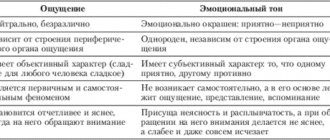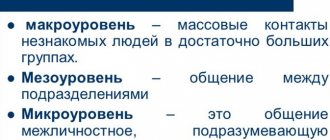Hello, dear readers of the KtoNaNovenkogo.ru blog. Communication through speech became possible after the evolution of animals into humans.
Ancient people used sound signals to warn of danger or convey important information that a bush with edible berries had grown nearby.
Today, verbal communication is something that every person cannot do without. Starting from morning coffee over instant messengers to conversations at work with colleagues about the boss’s new relationship.
What it is
It is customary to distinguish two types of contact: through speech and facial expressions, body posture, touch, etc. Verbally means conveying information verbally. This means not only an oral conversation, but also a written one - through text in instant messengers.
This also refers to internal dialogue, when a person communicates with himself. For good verbal communication, an individual must develop his thinking, increase his vocabulary, and read a lot of books.
Important! When writing, you need to follow the rules of the Russian language, since illiterate text causes unpleasant emotions.
In psychology
It is believed that people can communicate most effectively through a sign system, i.e. language. It is with its help that a person can think, i.e. putting images into words.
Speech allows:
- Find the meaning of phenomena;
- Understand the event;
- Express feelings;
- Indicate your position and worldview.
Personality, consciousness and language are connected and cannot exist separately. Problems arise when speech is used incorrectly. In psychology, several functions of verbal communication are distinguished: interaction between individuals, receiving and transmitting information, displaying accumulated knowledge, expressing feelings.
Verbalism is the ability to unite on different grounds. For example, people of the same nationality speak the same language, this allows them to gather in one group.
How to use
Verbal communication - what is it in psychology
Nonverbal and verbal communication exist together. A person usually does not think about what and how he uses, since all processes occur unconsciously. For example, experts have established that an individual can use 3,000 words per hour.
There are special exercises that can make communication effective
Verbal interaction is based on two principles: a set of words and rules for creating phrases. The processes of thinking and speech are inseparable, so communication occurs approximately according to the following scheme:
- The speaker selects words and then mentally forms a statement.
- Says the phrase out loud.
- The interlocutor perceives the information and prepares a response statement.
When communicating verbally, clarity of phrase is important. Even if it is pronounced correctly, another person may interpret it incorrectly. A grammatically formatted sentence is easier to understand, especially in written form.
In order to understand what a verbal method of communication is, you need to know all the features of the process. Not only words have meaning, but also voice modulation, rhythm, intonation, pauses. In writing, the tilt and pressure of the pen is important. Such signs do not appear in printed text.
Value[ | ]
The most important achievement of man, which allowed him to use universal human experience, both past and present, was speech communication, which developed on the basis of work activity. Speech is language in action. Language is a system of signs, including words with their meanings plus syntax - a set of rules by which sentences are constructed. A word is one of the varieties of signs, since the latter are present in various kinds of formalized languages. The objective property of a verbal sign, which determines theoretical activity, is the meaning of the word, which is the relationship of the sign (word in this case) to the object designated in reality, abstractly from how it is represented in the individual consciousness.
Unlike the meaning of a word, personal meaning is a reflection in the consciousness of the place that an object occupies in the system of activity of a particular person. If the meaning unites the socially significant features of a word, then the personal meaning is the subjective experience of its content.
The following main functions of the language are distinguished:
- a means of existence, transmission and assimilation of socio-historical experience;
- means of communication (communication).
Performing the first function, language serves as a means of conveying information about the studied properties of objects and phenomena. Through language, information about the world around us and man himself, received by previous generations, becomes the property of subsequent generations. Performing the function of a means of communication, language allows us to influence the interlocutor directly (if we directly indicate what needs to be done) or indirectly (if we inform him of information important for his activities, which he will focus on immediately or at another time in the appropriate situations).
Development and change in the lexical composition of a language, its grammatical and sound (see also speech sound, phoneme) structure is possible only with the continuous use of linguistic structures in living speech. The lack of verbal communication leads to the death of a language or, if there is a sufficient number of written documents, to its conservation at a certain level of development, as is the case with the Latin and Ancient Greek languages. At the same time, the grammatical structure of the language remains unchanged, the vocabulary does not reflect changes occurring in the surrounding world and human activity, and the phonetic structure can only be theoretically reconstructed on the basis of “descendant” languages.
The following language functions are also distinguished:
- Lexical;
- Denoting;
- Regulatory;
- Communicative.
Speech is an essential element of human activity, allowing a person to understand the world around him, transfer his knowledge and experience to other people, and accumulate it for transmission to subsequent generations.
Being a means of expressing thoughts, speech, during its development in ontogenesis, becomes the main (but not the only) mechanism of human thinking. Higher, abstract thinking is impossible without speech activity.
I.P. Pavlov noted that only speech activity gives a person the opportunity to abstract from reality and generalize, which is a distinctive feature of human thinking.
Depending on the form of communication, speech activity is divided into oral
(implying
speaking
and
listening
) and
writing
(
writing
and
reading
).
During “productive” types of speech activity - speaking
and
writing
- the following groups of mental and physiological mechanisms are involved:
- mechanism for programming speech utterances (transmitted meaning);
- a group of mechanisms associated with the construction of the grammatical structure of an utterance, the search for the necessary words according to semantic features, the choice of a certain sound (in oral speech, see speech sound, phoneme) or graphic system (in written speech, see grapheme, letter); According to modern research, the performance of these functions is localized in the central nervous system mainly in a region of the temporal cortex called Broca's area (Brodmann's area 45) and which was one of the last stages of human evolution.
- physiological mechanisms that ensure the actual implementation of speech utterance (the physical process of “speaking” or “writing”).
The rules of language construction have ethnospecific features, which are expressed in a system of phonetic, lexical, grammatical and stylistic means and rules of communication in a given language. Speech is closely integrated with all human mental processes. The linguistic side of human speech behavior is studied by psycholinguistics.
Properties of speech:
- The content of speech is the number of thoughts, feelings and aspirations expressed in it, their significance and correspondence to reality;
- Speech intelligibility is the syntactically correct construction of sentences, as well as the use of pauses in appropriate places or highlighting words using logical stress;
- The expressiveness of speech is its emotional richness, the richness of linguistic means, their diversity. In terms of its expressiveness, it can be bright, energetic and, conversely, sluggish and poor;
- The effectiveness of speech is the property of speech, which consists in its influence on the thoughts, feelings and will of other people, on their beliefs and behavior.
Speech is divided into internal and external. External types of speech are divided into dialogic and conversational.
Rules and types
Types of communication in psychology - what they include, its functions
Psychologists have been observing people for a long time, studying types of communication, and developing strategies for successful conversations. If you have a high level of intelligence, you can master them; this will be useful in everyday life.
Basic Rules:
- Kindness and respectful attitude are the guarantees of good communication.
- You cannot impose your point of view.
- Logic is observed in conversation, which means that statements must be consistent.
- Replies are kept short and clear.
- The age, nationality and religion of the interlocutor are always taken into account.
For successful communication, it is important to maintain a calm demeanor.
Important! You cannot insult, put pressure on, or humiliate a person - this causes a negative reaction.
Not everyone understands what verbal is: what kind of communication it is - oral or not. For such a communication process, both conversation and writing are used.
There are several types of verbal interaction: dialogue or monologue. The first requires the participation of one or more people who actively participate in the discussion. A monologue is a statement by one individual, usually voluminous in content.
There are two types of written speech: immediate and delayed. In the first option, communication takes place in real time, for example, in a chat or instant messenger. The second option involves receiving a response for a long time, for example, via email.
With dactyl speech, communication occurs through gestures
External speech will not exist without internal dialogue. The formation process cannot be simple, since the brain is involved.
Features of verbal communication
Functions of communication in psychology and their brief description
A person receives information from the world in different ways. One of these channels is verbal conversation. It is unique to humans. With verbal contact, more data is transmitted, but the process will always be accompanied by non-verbal signals.
There are different techniques that can make communication effective. They are actively used by marketers, salespeople, and businessmen. They can also be useful in everyday life.
Ways to make communication effective
The level of social skills does not depend on age. They are not given at birth, they need to be developed. Therefore, only through training can communication be made effective.
Understanding what it means to interact verbally helps you build relationships with people. To do this, you need to show interest in the interlocutor - this allows you to achieve goodwill.
It is better to talk about topics that are interesting to another person. For example, he works in the field of computer science, then you can ask about it. You cannot judge, criticize, or insult. Even during a discussion, one must adhere to the rules of politeness.
In order to understand what it is to communicate verbally, you need to practice a lot. During practice, you can practice clear pronunciation of words and phrases - this is necessary for understanding the text.
The rules of communication also apply on the virtual network.
It is worth avoiding psychological violence during interaction, as this causes negative emotions in the interlocutor. Positivity and openness are better for conversation.
In order to find out what verbality is, it is not necessary to create special conditions. This type of interaction is available to all people. With the right approach, this skill can be developed.
Occurrence[ | ]
Speech (articulate speech) appeared during human evolution between 1.7-2 million years ago, in the first homo - it was at this time that the speech apparatus was formed. According to anthropology, the main sign of the presence of a speech apparatus in a fossil individual is the styloid process of the temporal bone; it is rarely present in the skulls of Ardipithecus and is present in almost all skulls of early Homo. Speech is determined not only by the styloid process, but also by it, and it is easily identified in fossil remains[1].
According to Norwegian scientists Are Brean and Geir Skeie, the appearance of speech in the early stages of the evolution of Homo Sapiens
was preceded by communication using inarticulate sounds of a musical nature: rhythm, timbre, simple “melodies” and similar methods. This was facilitated by changes in the structure of the skull and mouth of hominids associated with the development of upright walking[2].









